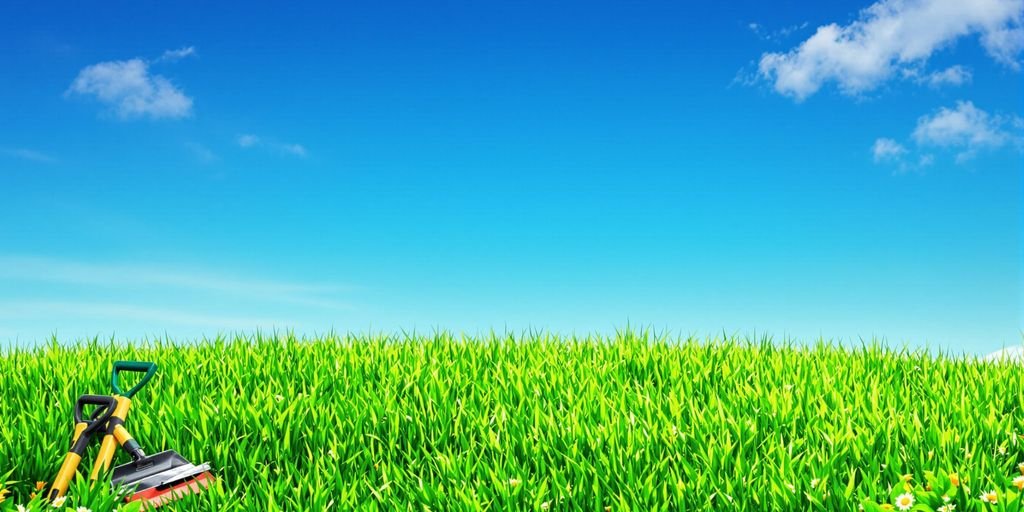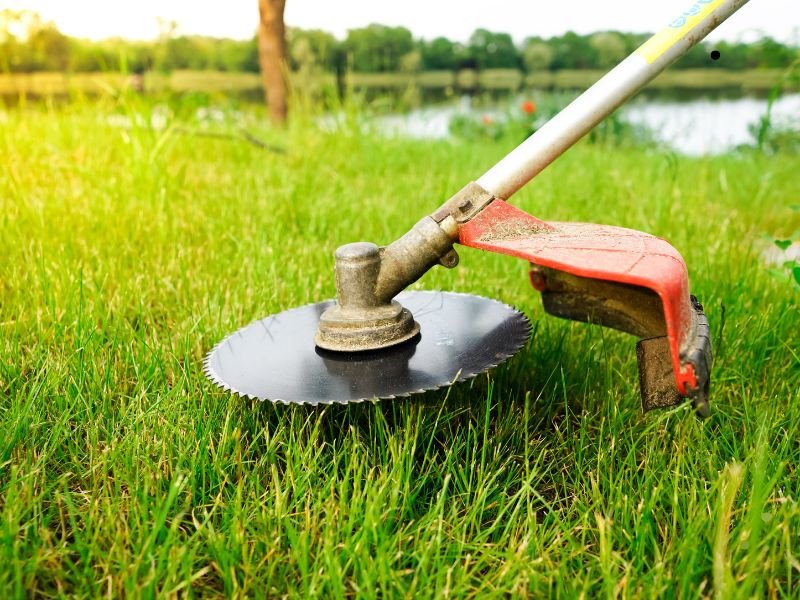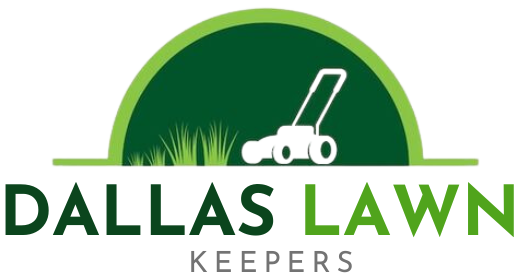
Keeping your lawn in good shape doesn’t have to be complicated, but it does take some planning. A solid lawn maintenance schedule can make all the difference in keeping your grass looking great all year. Whether you’re dealing with spring growth, summer heat, or winter dormancy, knowing what to do each month will set you up for success.
Key Takeaways
- A lawn maintenance schedule helps keep your grass healthy year-round.
- Spring is the perfect time to aerate, fertilize, and tackle weeds.
- In summer, focus on proper watering and mowing to beat the heat.
- Fall is great for overseeding, fertilizing, and prepping for winter.
- Winter lawn care includes protecting dormant grass and planning for spring.
Understanding the Basics of Lawn Care
The Importance of Regular Lawn Maintenance
A healthy lawn doesn’t just happen by accident—it takes consistent care. Regular maintenance keeps your grass strong and vibrant, making it more resistant to pests, weeds, and diseases. Plus, a well-maintained lawn improves curb appeal and gives you a great outdoor space to enjoy. Think of it like this: your lawn is an investment, and a little effort each week can save you from bigger problems later.
Key Tools for Effective Lawn Care
Having the right tools can make all the difference. Here’s a quick list of must-haves:
- Lawnmower: Choose one that suits your yard size—push, self-propelled, or riding.
- Rake: For clearing leaves, grass clippings, and debris.
- Fertilizer spreader: Ensures even application of nutrients.
- Aerator: Helps improve soil health and allows water and nutrients to reach roots.
- Garden hose or sprinkler system: Keeps your lawn hydrated during dry spells.
Investing in quality tools upfront can save you time and frustration down the road.
Common Lawn Care Mistakes to Avoid
Even with the best intentions, it’s easy to make mistakes. Here are some common ones to watch out for:
Cutting the grass too short: This stresses the lawn and makes it more prone to weeds.
Overwatering: It can lead to shallow roots and invite fungal diseases.
Ignoring soil health: Without proper nutrients, your lawn won’t thrive.
Fertilizing at the wrong time: Timing is key to getting the most out of fertilizers.
Skipping regular maintenance: Small tasks like mowing and weeding add up over time.
A little knowledge goes a long way. By avoiding these pitfalls, you set your lawn up for long-term success. Need help? Call us today for expert lawn care advice!
Spring Lawn Care: Preparing for Growth
Essential Spring Lawn Maintenance Tasks
Spring is the season when your lawn wakes up from its winter slumber, and it’s the perfect time to give it some TLC. Start with a thorough cleanup—remove leaves, twigs, and any debris leftover from fall and winter. This clears the way for proper growth and ensures your lawn gets the sunlight it needs. Next, consider getting a soil test to check its nutrient levels and pH balance. Knowing your soil’s condition will help you decide whether to add lime or specific fertilizers.
Here are some key spring tasks:
- Rake to remove thatch buildup.
- Test your soil for nutrient deficiencies.
- Apply a pre-emergent herbicide to prevent weeds.
For more details on soil testing and effective spring strategies, check out essential spring lawn care tips to reseed. Ready to give your lawn the care it deserves this spring?
How to Aerate and Fertilize Your Lawn in Spring
Aerating your lawn in spring helps loosen compacted soil, allowing water, air, and nutrients to reach the roots. You can use a manual aerator or rent a machine for larger areas. After aeration, it’s time to fertilize. Choose a fertilizer that matches your soil’s needs—organic options are great for a more natural approach. Timing is everything; apply fertilizer when the grass begins to grow actively but before the heat of summer sets in.
Here’s a quick guide:
| Task | Recommended Timing |
| Aeration | Early to mid-spring |
| Fertilization | Mid to late spring |
Dealing with Weeds and Pests Early in the Season
Weeds and pests love spring as much as your grass does, so don’t wait until they take over. Use a pre-emergent herbicide to stop weeds like crabgrass before they sprout. For pests, keep an eye out for signs of grubs or other lawn-damaging insects. Spot-treat problem areas with natural or chemical solutions as needed. Staying ahead of these issues will save you a lot of headaches later in the season.
Early action in spring sets the tone for a healthy, lush lawn all year long. Don’t skip the prep work—it’s worth it!
Summer Lawn Care: Keeping Your Grass Healthy
Watering Tips for Hot Weather
When the summer sun is blazing, your lawn can dry out fast. To keep it looking green and lush, water deeply but less frequently. Aim for about 1 inch of water per week, including rainfall. Early mornings are the best time to water since it minimizes evaporation and allows the grass to absorb moisture before the heat kicks in. Avoid watering in the evening, as it can lead to fungal problems.
Mowing Strategies for Summer
Mowing might seem straightforward, but during summer, a few adjustments can make a big difference. Set your mower to a higher setting, around 3 to 4 inches, to let the grass grow taller. This helps shade the soil, keeping it cooler and reducing water loss. Letting grass grow taller also encourages deeper root development, making your lawn more drought-resistant. Remember to keep mower blades sharp to avoid tearing the grass, which can make it more vulnerable to stress.
Protecting Your Lawn from Heat Stress
Summer heat can be brutal on your lawn, but a little care goes a long way. Avoid heavy foot traffic during the hottest parts of the day, as compacted soil can struggle to retain moisture. If your lawn starts showing signs of stress, like brown patches or wilting, resist the urge to overwater—it might just need a break from the heat. Adding a layer of mulch around the edges can help retain moisture and keep the soil cooler.
A well-maintained summer lawn isn’t just about looks—it’s about creating a resilient foundation that can handle the challenges of the season.
Fall Lawn Care: Preparing for Dormancy
Overseeding and Fertilizing in Fall
Fall is the perfect time to give your lawn a little extra care before winter sets in. Cool-season grasses thrive during this time, making it ideal for overseeding. Spread new grass seed over thin or bare spots to fill in your lawn. After that, apply a slow-release fertilizer to feed the roots and help them store energy for the colder months. For lawns with warm-season grass, focus on maintaining cleanliness and mowing until the grass goes dormant. Aerate and dethatch your lawn during this time to improve soil health and allow nutrients to penetrate more effectively.
How to Manage Leaves and Debris
Fallen leaves might look pretty, but they can smother your grass if left unchecked. Rake or mulch the leaves regularly to keep your lawn breathing. Use a mulching mower to shred the leaves into smaller pieces, which can act as a natural fertilizer. Also, clear away any debris like twigs or branches to avoid creating damp spots where pests might hide.
Winterizing Your Lawn for the Cold Months
Before winter arrives, prepare your lawn for dormancy. Lower your mower’s blade to cut the grass shorter during the final mow of the season. This reduces the risk of snow mold and other winter issues. Add a layer of compost or topsoil to protect the roots and improve soil quality. Finally, store your lawn equipment properly—clean and sharpen mower blades, and drain fuel from gas-powered tools to keep them in good shape for spring.
Winter Lawn Care: Maintaining Dormant Grass
Preventing Snow Mold and Other Winter Issues
Winter can be tough on your lawn, especially when snow mold and other issues creep in. Snow mold is one of the most common problems, and it often shows up as discolored patches once the snow melts. To help prevent this, avoid piling up snow in one spot when shoveling your driveway or walkways. A light raking before winter can also reduce the risk by clearing out thick layers of thatch or debris.
Another thing to keep in mind? Don’t let your lawn sit under heavy objects like patio furniture or toys during the cold months. The weight can compact the soil and damage the grass underneath, making it harder for your lawn to bounce back in spring. Need help preparing your lawn for winter? Call us today and let our experts keep your yard in top shape!
The Role of Lawn Equipment Maintenance in Winter
Winter is the perfect time to give your lawn equipment some TLC. Start by cleaning your mower and sharpening the blades. This will save you time and frustration when spring rolls around. Drain any leftover fuel from the gas tank to prevent engine issues, and check your other tools—like trimmers and aerators—for wear and tear. Replacing or repairing them now means you’ll be ready to go when the growing season kicks in.
Here’s a quick checklist for winter equipment care:
- Clean all tools thoroughly to remove dirt and debris.
- Sharpen mower blades and other cutting tools.
- Drain fuel from gas-powered equipment.
- Store everything in a dry, safe place to prevent rust.
Planning Ahead for Spring Lawn Care
Even though your lawn is dormant, winter is a great time to plan for the upcoming season. Think about what worked last year and what didn’t. Maybe your grass type struggled in the heat, or weeds were a bigger problem than usual. Reflecting on last year’s challenges? Our services offer expert guidance to improve your lawn care strategy. Use this downtime to research solutions, like switching to a more heat-tolerant grass or trying a new fertilization schedule.
Take note of any supplies you’ll need, too. Stock up on seeds, fertilizer, or weed control products so you’re not caught off guard when spring arrives. A little planning now can save you a lot of effort later.
Winter might seem like a break for your lawn, but a little prep work now can make a big difference when the snow melts.
Organic Lawn Care Practices for a Greener Yard
Benefits of Organic Lawn Care
Organic lawn care is all about creating a healthy yard without relying on synthetic chemicals. The big win? It’s safer for your family, pets, and the environment. Unlike traditional methods, organic practices focus on improving soil health, which leads to stronger, more resilient grass. Plus, you’ll avoid harmful runoff that can pollute nearby water sources. And let’s be real—there’s something satisfying about knowing your lush lawn is naturally green.
Natural Fertilizers and Weed Control Methods
When it comes to feeding your lawn, natural fertilizers like compost, bone meal, or seaweed extracts are excellent choices. These options provide nutrients slowly, giving your grass time to absorb what it needs. For weed control, skip the harsh sprays. Instead, try:
- Corn gluten meal to prevent weed seeds from sprouting.
- Hand-pulling weeds while the soil is damp for easier removal.
- Using mulch to block sunlight from reaching weed seeds.
These steps take a little more effort, but they’re worth it for a healthier yard.
How to Transition to Organic Lawn Maintenance
Switching to organic isn’t an overnight thing—it’s a process. Start by testing your soil to see what nutrients it’s missing. From there, you can:
- Stop using synthetic fertilizers and pesticides. Let your lawn adjust to a chemical-free life.
- Aerate your lawn to improve airflow and allow organic matter to reach the roots.
- Add organic compost to enrich the soil and encourage microbial activity.
Be patient! Organic lawns take time to thrive, but once they do, they’re easier to maintain and better for the planet.
The key is consistency. Stick to the plan, and soon you’ll notice your lawn looking healthier, greener, and more vibrant—all without the chemical crutches.
Customizing Your Lawn Maintenance Schedule
Adapting Lawn Care to Your Climate
Every region has its quirks when it comes to lawn care. Your climate dictates how often you should mow, water, and fertilize. For example, lawns in humid areas might need more attention to prevent fungal issues, while dry regions require careful water management. Understanding your local weather patterns is key to keeping your grass healthy.
Here’s a quick breakdown of how climate affects lawn care:
| Climate Type | Key Lawn Care Focus |
| Humid | Fungus prevention, aeration |
| Dry/Arid | Efficient watering, drought-resistant grass |
| Cold/Temperate | Seasonal fertilizing, weed control |
If you’re unsure where to start, consider Lawn Pride’s seasonal lawn care calendar to get month-by-month tips tailored to your region.
Choosing the Right Grass Type for Your Region
Not all grass types thrive everywhere. Some love the heat, while others prefer cooler weather. Picking the right type can save you time and headaches down the road. Here are a few common grass types and their ideal conditions:
- Bermudagrass: Loves heat and sunshine, great for southern lawns.
- Kentucky Bluegrass: Perfect for cooler climates, but needs more water.
- Zoysia: A hardy option for a variety of conditions, tolerates traffic well.
When selecting grass, think about how much sunlight your yard gets and how much wear and tear it will endure.
Balancing Lawn Care with Environmental Sustainability
Taking care of your lawn doesn’t mean you have to harm the planet. You can make eco-friendly choices that benefit both your yard and the environment. Here are some ideas:
- Use organic fertilizers instead of chemical ones.
- Collect rainwater for irrigation.
- Switch to electric or manual mowers to reduce emissions.
A sustainable lawn isn’t just about looking good—it’s about creating a space that works in harmony with nature.
By customizing your lawn care schedule to fit your climate, grass type, and environmental goals, you’ll set yourself up for success. Remember, a little planning goes a long way toward achieving that lush, green lawn you’re dreaming of. Ready to make your lawn more eco-friendly? Contact us today for personalized tips and solutions to help you create a sustainable, beautiful yard!
Wrapping It Up
Keeping your lawn looking great doesn’t have to be complicated. By sticking to a simple month-by-month plan, you can tackle the right tasks at the right time without feeling overwhelmed. Sure, there might be a few hiccups here and there—like forgetting to fertilize or mowing a little too short—but that’s all part of the process. The key is consistency. A little effort spread out over the year can make a big difference. So, grab your gloves, fire up that mower, and get out there. Your lawn’s not going to take care of itself!
Frequently Asked Questions
How often should I mow my lawn?
It’s best to mow your lawn once a week during the growing season. However, this might change depending on how fast your grass grows.
What’s the right way to water my lawn?
Water your lawn deeply but less often, around 1 to 1.5 inches per week. Early mornings are the best time to water.
When should I fertilize my lawn?
Fertilize your lawn in early spring and again in the fall. Choose a fertilizer that fits your grass type and local soil conditions.
How can I stop weeds from taking over my lawn?
Weeds can be controlled by keeping your grass healthy, mowing at the right height, and using a pre-emergent herbicide in early spring.
Is organic lawn care better for the environment?
Yes, organic lawn care avoids harmful chemicals, making it safer for pets, kids, and the environment. It also improves soil health over time.
What’s the best way to prepare my lawn for winter?
To get your lawn ready for winter, rake up leaves, apply a winter fertilizer, and avoid heavy foot traffic on frozen grass.
